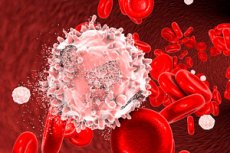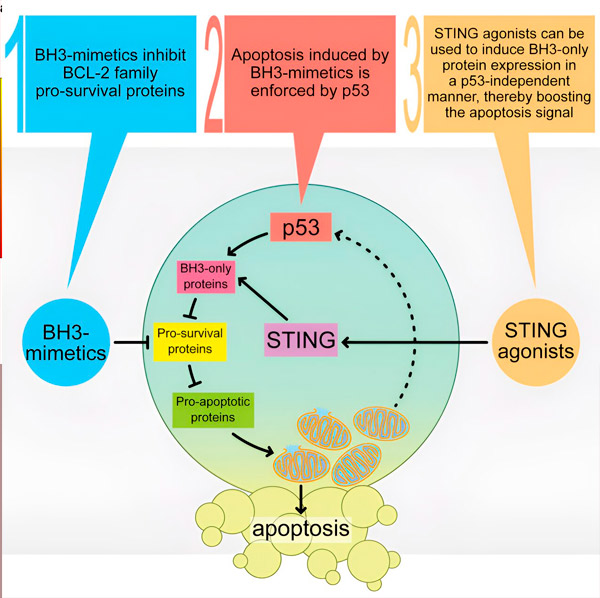New publications
Combination treatment for blood cancer: study shows two drugs kill cancer cells
Last reviewed: 02.07.2025

All iLive content is medically reviewed or fact checked to ensure as much factual accuracy as possible.
We have strict sourcing guidelines and only link to reputable media sites, academic research institutions and, whenever possible, medically peer reviewed studies. Note that the numbers in parentheses ([1], [2], etc.) are clickable links to these studies.
If you feel that any of our content is inaccurate, out-of-date, or otherwise questionable, please select it and press Ctrl + Enter.

A new combination of two cancer drugs has shown great promise as a future treatment for patients with acute myeloid leukemia (AML), one of the most common types of blood cancer. A new study by scientists at WEHI (Walter and Eliza Hall Institute of Medical Research) found that a combination of two existing drugs killed AML cells in lab tests.
The discovery, published in the journal Cancer Cell, could soon lead to clinical trials, offering hope for the 1,100 Australians diagnosed with AML each year.
Stimulating the ‘Cell Death Executor’ The WEHI team combined venetoclax, one of the standard drugs for treating acute myeloid leukemia, with a STING agonist, a new class of immunotherapy drugs. Venetoclax was based on a landmark research discovery at WEHI.
Dr Sarah Diepstraten, one of the study's co-authors, said the team looked at different types of blood cancer, including cancer samples from AML patients, and treated them in the lab with a combination of drugs, which led to impressive results.
“It’s really exciting that combining venetoclax with this new immunotherapy treatment can actually eradicate AML,” Dr. Diepstraten said.
The Critical Role of the p53 Protein
The combination treatment showed great promise in AML samples associated with a mutated protein called p53, a type of AML that is typically more aggressive and difficult to treat. The p53 protein plays a critical role in our bodies, preventing cancer cells from forming, acting as a protector, and arresting the growth of damaged or abnormal cells. However, p53 mutations significantly increase the risk of developing cancer.
“For patients with AML who are not experiencing sufficient death of their leukemia cells due to this mutation, the combination of venetoclax with a STING agonist causes greater killing of AML cells than treatment with venetoclax alone,” explains Dr. Diepstraten.

Graphic figure. Source: Cancer Cell (2024). DOI: 10.1016/j.ccell.2024.04.004
STING agonist in a new role
This study is the first to use a STING agonist to directly target mechanisms within cancer cells, stimulating the natural processes that cause them to die. Previously, STING agonists have been used to attack solid tumors by activating the body's immune response.
Potential clinical trials
Professor Andrew Wei, one of the senior authors of the study, said the results were very promising, although further research was needed.
"Early clinical trials in solid tumours have shown that STING agonists are well tolerated by the body, and these results provide new hope for patients with the most resistant forms of leukaemia," said Professor Wei.
WEHI and their clinical partners are now translating these promising results into a new clinical trial for AML patients in collaboration with Melbourne-based biotech Aculeus Therapeutics, which is developing its own STING agonist.
Aculeus Therapeutics CEO Dr. Mark Devlin said he was excited about the potential of WEHI’s recent discovery. “Drug development is a team game in science. Aculeus has developed a promising new drug, but collaborating with the WEHI teams, who deeply understand the disease biology and clinical landscape, will help determine how this drug will be used most effectively.”
Aculeus' STING agonist, ACU-0943, is expected in clinical trials for the treatment of AML later this year.
